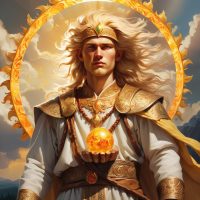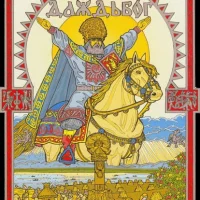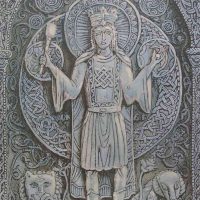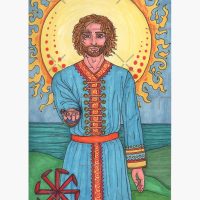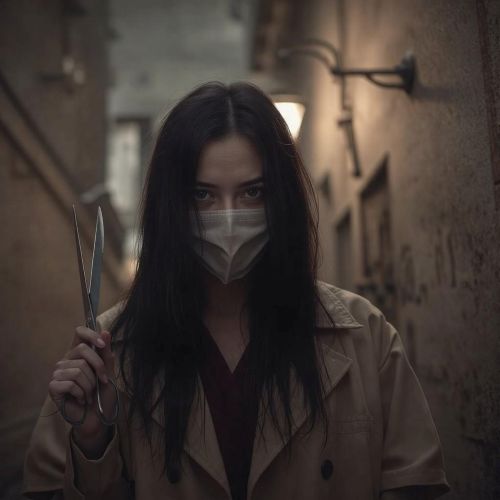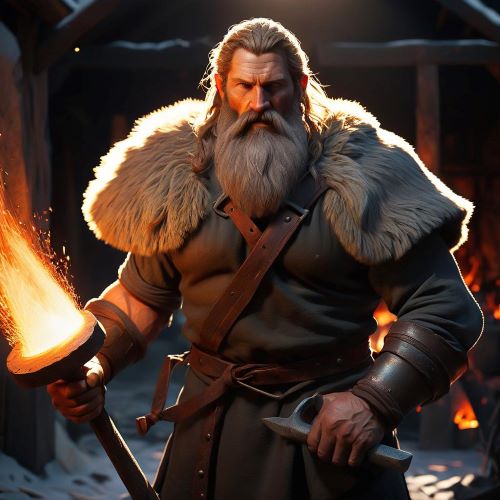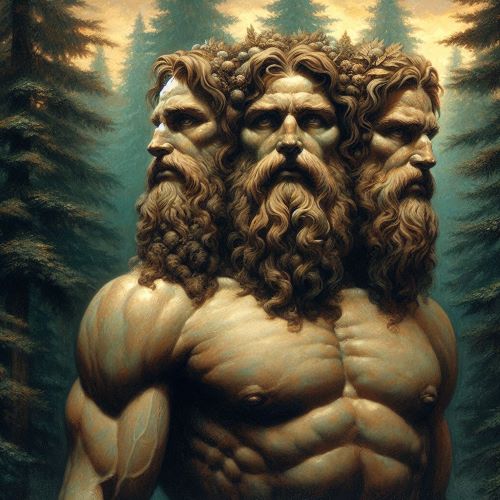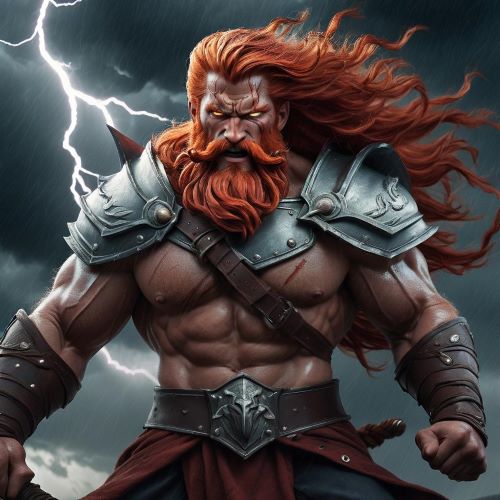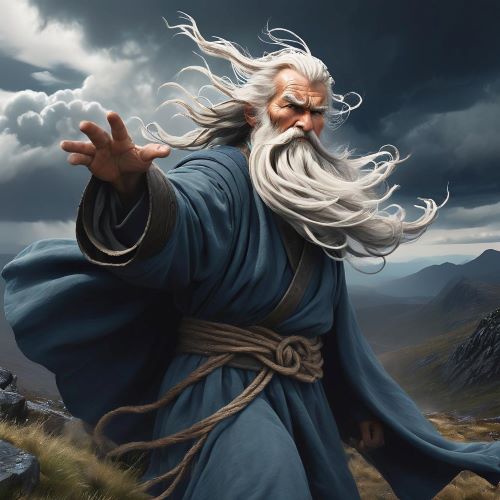Dazhbog : The Sun God
Listen
At a glance
| Description | |
|---|---|
| Origin | Slavic Mythology |
| Classification | Gods |
| Family Members | Svarog (Father) |
| Region | Ukraine, Belarus |
| Associated With | Sun, Light, Masculinity |
Dazhbog
Introduction
Dazhbog, a key figure in Slavic mythology, is revered as the god of the sun, happiness, destiny, and justice. His name, meaning “god’s gift,” underscores his importance in ancient Slavic beliefs. Revered across Slavic lands, he commands the celestial sphere, bringing warmth, light, and life to the world. Also known as Dazhboh, he embodies the sun’s vital qualities and its nurturing role on earth. Despite fragmented information on Slavic mythology, Dazhbog remains widely worshipped across diverse regions.
Physical Traits
Depictions of Dazhbog often portray him as radiant, embodying the splendor and power of the sun. He is shown with golden hair ablaze, reflecting his divine radiance and symbolizing the sun’s life-giving force. Riding a chariot across the sky, Dazhbog illuminates the heavens, casting light upon the earth below. While details of his appearance are sparse in surviving sources, scattered accounts suggest characteristics of youthful vigor and strength, often depicted with golden hair resembling sun rays or riding a fiery chariot pulled by magnificent horses. The white wolf, symbolizing purity and strength, is sometimes associated with Dazhbog. His physical form may transition from a youthful man to a red-faced elder, riding a golden chariot drawn by fiery horses, with the white
Family
Dazhbog is often considered the son of Svarog, the Slavic god of celestial fire and the forge, and the grandson of Rod, the primordial god of creation and fertility. His familial connections extend to other prominent deities within the pantheon, including Perun, the god of thunder, and Mokosh, the goddess of earth and fertility. As part of this divine lineage, Dazhbog plays a crucial role in maintaining cosmic order, bridging celestial and earthly realms.
The specifics of Dazhbog’s family lineage vary across sources. While the Primary Chronicle identifies him as Svarog’s son, alternative accounts suggest different origins, such as being Perun’s offspring or existing independently without a defined family tree. This ambiguity reflects the decentralized nature of Slavic beliefs, where local variations coexist with broader shared concepts. Dazhbog is also associated with the Zorya, morning and evening auroras responsible for opening and closing the gates of his palace. However, precise relationships between Dazhbog and other Slavic gods like Khors and Svarog remain uncertain.
Other names
In Slavic mythology, Dazhbog is recognized by various names and epithets, each reflecting different facets of his divine essence. For instance, Dazhdbog, meaning “giving god” or “god of gifts,” underscores his role as a bestower of blessings and abundance. Additionally, he is sometimes referred to as Khors, a title associated with the sun’s rays and the dawn. These alternate names provide insight into the multifaceted nature of this revered deity, showcasing his diverse attributes and spheres of influence.
Dazhbog’s name appears with different spellings and regional variations across the vast Slavic world, predominantly used in South Slavic languages like Polish and Czech. A variant found in East Slavic languages such as Russian and Ukrainian, Dabog is encountered in South Slavic regions like Serbia and Croatia. Moreover, Dazhbog is known by several other names among various Slavic tribes, including Daždźboh in Belarusian, Dazhboh in Ukrainian, Dažbog, Dazhdbog, Dajbog, Daybog, Dazibogu, or Dadźbóg.
Powers and Abilities
As the god of the sun, Dazhbog wields immense power over light, warmth, and the cycles of nature. He controls the movement of the sun across the sky, guiding its path with his chariot and illuminating the world with its radiant glow. Through his divine influence, Dazhbog nurtures the growth of crops, ensures the fertility of the land, and sustains life upon the earth. His presence is felt in the changing seasons, as the length of daylight waxes and wanes in accordance with his celestial dance.
Beyond his solar dominion, Dazhbog is also associated with prosperity, wealth, and abundance. As the giver of gifts, he bestows blessings upon his devotees, bringing prosperity and success to those who honor him. In times of need, his divine intervention offers hope and renewal, guiding mortals through the trials of life with his benevolent radiance.
As the sun god, Dazhbog was believed to possess a range of potent abilities. He was seen as the driver of the sun across the sky, influencing the cycles of day and night. His blessings were believed to be essential for agriculture, ensuring bountiful harvests and fertile land. His name, “giving god,” reflects his association with prosperity and material well-being. The white wolf, sometimes considered his companion, symbolized protection against harm and darkness.
Dazhbog’s influence extended beyond the physical world. He was viewed as a symbol of hope, new beginnings, and the cyclical nature of life, death, and rebirth, mirroring the daily rising and setting of the sun. As the god of the sun, Dazhbog is associated with light, warmth, and life. He is symbolic of the triumph of light over darkness. Linked to the vibrant forces of nature, Dazhbog represented fertility and masculine energy in Slavic beliefs. His association with the cycles of life and the continuity of generations contributed to his revered status as a deity who blessed marriages, childbirth, and agricultural endeavors.
Modern Day Influence
Dazhbog’s legacy endures in modern culture, leaving an indelible mark on Slavic traditions and folklore. His imagery resonates in various art forms, literature, and religious practices, with festivals honoring him celebrated in Slavic countries. Beyond Slavic borders, Dazhbog fascinates scholars and mythology enthusiasts worldwide, embodying universal themes of light, warmth, and renewal. References to Dazhbog abound in literature and popular culture, captivating imaginations and inspiring creativity.
Despite the dominance of Christianity over Slavic paganism, remnants of Dazhbog’s legacy endure. Echoes of Dazhbog persist in Slavic folklore through tales of sun heroes and light-associated beings. A resurgence of interest in Slavic paganism has revived focus on Dazhbog among some practitioners. His name and image appear in modern media, reflecting ongoing fascination with Slavic mythology.
Dazhbog, the radiant god of the Slavs, symbolizes life, warmth, and hope, offering insights into Slavic mythology’s rich tapestry and enduring cultural impact. Despite fragmented details, his legacy reminds us of the sun’s enduring power and its influence on our world. His significance in ancient Slavic beliefs remains a subject of interest and debate among experts, offering valuable insights into pre-Christian Slavic spirituality and cultural practices.
Related Images
Frequently Asked Questions
What is lorem Ipsum?
I am text block. Click edit button to change this text. Lorem ipsum dolor sit amet, consectetur adipiscing elit. Ut elit tellus, luctus nec ullamcorper mattis, pulvinar dapibus leo.
What is lorem Ipsum?
I am text block. Click edit button to change this text. Lorem ipsum dolor sit amet, consectetur adipiscing elit. Ut elit tellus, luctus nec ullamcorper mattis, pulvinar dapibus leo.
What is lorem Ipsum?
I am text block. Click edit button to change this text. Lorem ipsum dolor sit amet, consectetur adipiscing elit. Ut elit tellus, luctus nec ullamcorper mattis, pulvinar dapibus leo.
What is lorem Ipsum?
I am text block. Click edit button to change this text. Lorem ipsum dolor sit amet, consectetur adipiscing elit. Ut elit tellus, luctus nec ullamcorper mattis, pulvinar dapibus leo.
What is lorem Ipsum?
I am text block. Click edit button to change this text. Lorem ipsum dolor sit amet, consectetur adipiscing elit. Ut elit tellus, luctus nec ullamcorper mattis, pulvinar dapibus leo.

